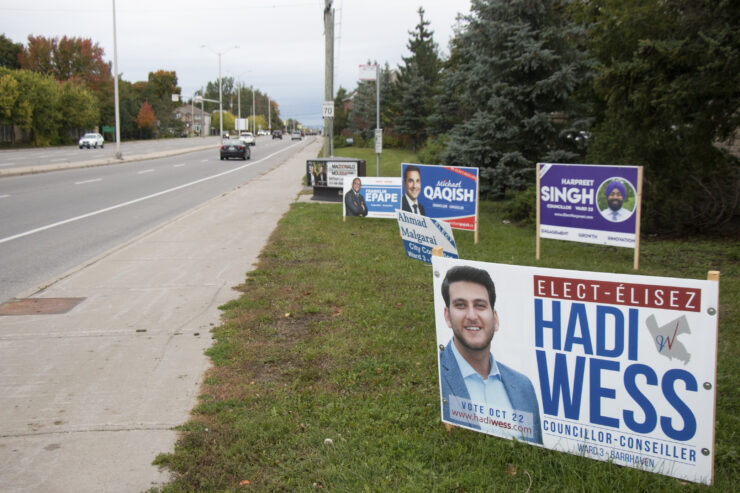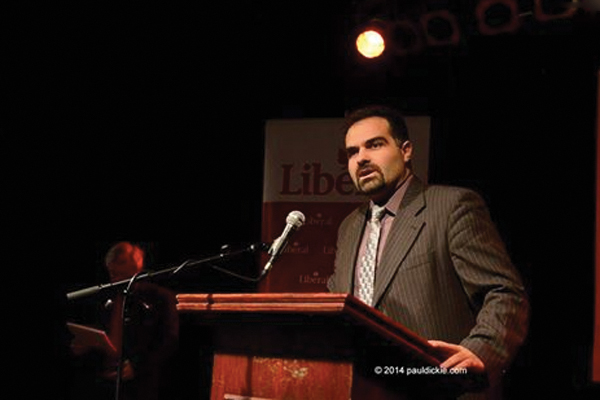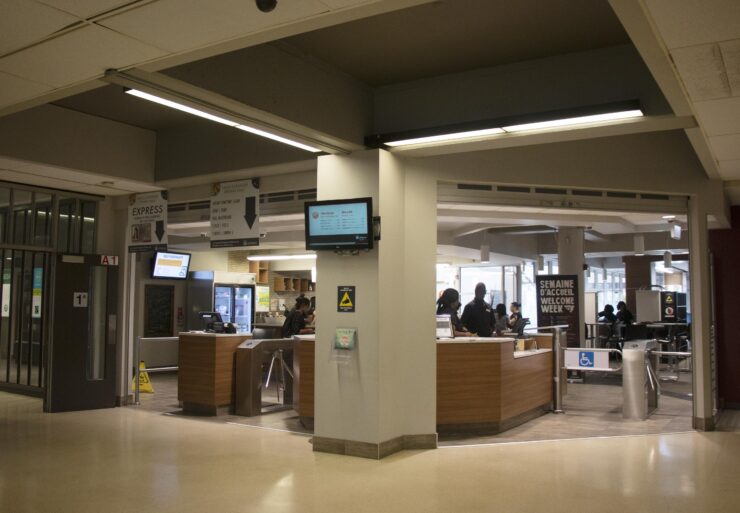The extended community of an Ottawa high school has been brought together in a way that few imagined possible, and fewer still will ever understand.
On Nov. 18 2018, the CBC published an investigative story detailing dozens of allegations of sexual abuse of multiple students at Bell High School. The allegations state three teachers at the west-end school preyed on and exploited students under their care, acting behind closed doors and with no repercussion for the better part of 30 years.
According to the article, Donald Greenham, Bob Clarke, and Tim Stanutz worked at Bell at various points between 1970 and as recently as 2016.
Greenham, a basketball coach who taught at another school, is alleged to have sexually assaulted several male students between 1970 and 1981, including on canoe trips outside of school. He eventually retired in good-standing after a long career.
Bob Clarke was a music teacher at Bell in the 1970s and 1980s. It is alleged he used his office in the music room and opportunities such as band trips to sexually assault students. He allegedly performed sexual acts in their presence and requested sexual acts from them in return, sometimes for better marks. In response to complaints made to Bell’s principal, Clarke was moved to neighbouring Sir Robert Borden High School, where he allegedly continued to abuse students. He left teaching in the early 1990s.
In 1986, the new music teacher at Bell was Tim Stanutz. In the early 2000s, Stanutz allegedly began an exploitative relationship with a female student whom he groomed to engage in sexual acts. It was alleged Stanutz also used the confines of his music room office to commit abuse. He is alleged to have exploited at least one other student at Bell.
As the CBC investigation explains, police were informed of Stanutz’s behaviour in 2016 by his victim’s therapist. It was this momentous step that led to a landslide of accusations against all three teachers.
Greenham was charged by police with 50 counts of indecent assault and gross indecency, among other offences, but died in the days leading up to his trial. Clarke was convicted of eight counts and is now in federal prison. Stanutz was still teaching at Bell in 2016 when he was arrested and soon charged with six counts. On May 15, 2017, he died when his car collided with a dump truck.
A shared pain
As this news broke, two years of scattered police reports, veiled court proceedings and suppressed rumours suddenly took a definitive shape: names, faces, and facts.
This is what stared down the alumni and families of Bell High School that Sunday afternoon in November. They must have read silently, cautiously. They must have shared a moment of pain—if not for themselves, for their peers who were mistreated.
That’s how it was for me, at least.
I graduated from Bell in 2017. My father also attended in the 1980s, and my two brothers still attend the school now. Like any high school, Bell’s current and former students number in the tens of thousands and are spread across cities and generations. Many of them have stayed in Ottawa to study at the post-secondary level, including at the U of O.
As these two communities intersect, the personal histories and complex emotions associated with Bell’s story make their way into campus life at the U of O. This is where I searched for answers to one of my biggest questions: how are people looking back on the high school they grew up in, now fallen from grace?
I spoke with Bell alumni on campus about their experiences and their emotions regarding the news. In many ways, there are still more questions than answers.
Home of the Bruins
Built in 1962, Bell High School is located in the small suburban neighbourhood of Bells Corners, right at the western edge of Nepean.
Most people don’t realize that the school sits atop a hill; they forget how high up they are, never having noticed the incline of every path, road, or trail they took to get there. But if you face north, away from the ubiquitous trees of the Greenbelt, you can see straight over buildings, highways, and fields, all the way to the Ottawa River and the Gatineau hills beyond.
When it opened, Bell was in the middle of nowhere. Depending on who you talk to, it still is. I consider it one of the most beautiful places in the city, in its own way.
Today, the home of the Bell Bruins hosts over 1,000 students in Grades 7 to 12. It has programs for French immersion, gifted learning, English as a second language, and students with developmental disabilities. Naturally, its students and staff come from all over the place.
Thomas Power, a fourth-year political science student at the U of O, graduated from Bell in 2015. He found his place in the junior band, trivia club, and the school newspaper, the Roar.
“I found there was more of an inclusive spirit at Bell than (what) you would hear from people at other high schools,” he explained. “I think there was an atypical environment … in a good way, in terms of how tight the community was.”
Power draws specific attention to Bell’s arts community, which he says brings together people of many different backgrounds and interests.
“You had those trips to Stratford (Ont.), all the band activities, and you spent lots of time together,” he said.
These opinions of Bell seem to transcend individuals and even classes in Bell’s recent history: the school undoubtedly holds an important place in the hearts of many people.
I wanted to know what happens now, after 30 years of sexual abuse has come trickling down the hill and into the streets of Ottawa, into the open.
Seeing the other side
Now in her second year of conflict studies and human rights at the U of O, Yasmin Rezaaifar graduated from Bell in 2017. From the student council to rugby and the band, Rezaaifar was involved in many aspects of Bruin life. When she was confronted with the news in November, her reaction was clear.
“Just hearing all those details is kind of shocking … and seeing the faces of the victims … one of the first things I thought about was how different that experience was from mine,” she said. “And just thinking about how unfortunate that is, that you would ever associate a high school with such awful experiences.”
Of the same mind, Power mentions discussing the news with his friends.
“We were all reflecting on how we were looking back at what was going on while we were at Bell,” he said. “It was a surreal experience to see what I considered just an ordinary high school plastered up on national news.”
For those with personal stakes in the story, the pill is a tough one to swallow.
Rezaaifar recalls watching the news and seeing photos of the music room, along with the hall where her locker once was, while a narrator described the sexual abuse suffered by students.
“Those were safe spots for me,” she said. “Part of me thought that the way they were showing it was a bit ridiculous … at night, empty, just to add to that ominous feel. I think, if anything, what makes it so scary is that it happened in such a safe environment.”
On the other hand, maybe such imagery is needed to see the other side—the one that had remained invisible for so long.
“I would say it’s reflective of the mood,” said Power. “You have your memories of Bell presented now in a different light.”
A systemic issue
Accepting the terrible truths of this case has meant trying to understand, on some level, what allowed it to happen in the first place.
One aspect of the issue has been made clear by three decades of virtual silence and inaction: dangerous, illegal and harmful behaviour that takes place between teachers and students is not always coming to the surface. So, what allows it to stay hidden?
“Part of me wasn’t surprised,” Rezaaifar admitted. “Once teachers become respected in the community, and they have that public opinion, it’s hard to shake it. If anyone said anything bad about my favourite teacher, it would be hard to just instantly believe them.”
Just like in the criminal justice system or the hierarchies of the Catholic Church, it seems that vulnerable people who shine a light on abuse face a bastion of resistance—real or perceived.
“We tell students stuff like ‘your voice matters’ but then when it really matters, we don’t really act on it,” she added, referring in particular to allegations against Clarke and Greenham that were swept aside.
Then there’s the behaviour itself. There are troubling similarities among some of the relationships that the three teachers in question held with their students-turned-victims.
“I certainly think that closer, friendlier relations between teachers and students is something that had great advantages, especially in the arts,” Power acknowledged. “But as we’ve seen, there is an enormous potential for that to be misused in a predatory way.”
Teachers are placed in positions of trust and responsibility over young people, who have varying degrees of confidence, maturity, and power. This dynamic seems inherent in our education system. So, what can be done to prevent abuse?
“I think the physical location may have contributed,” explained Power. “That’s an example of a situation that could be remedied: not having the opportunities for teachers to interact with students in such secluded and hidden-away locations.”
Despite everything, Rezaaifar sees a way for this case to move the discussion forward in all schools.
“I like to think that because Bell is getting so much attention about it, we’ll start recognizing the issue,” she said. “It will start with Bell, and more and more we’ll start seeing the power dynamic between teachers and students and how that can so easily be abused.”
Holding on
It’s fair to say that alumni from Bell, as well as other schools where this has happened, are in the process of sorting and analyzing their memories of a special time in life. Which memories do we challenge? Which do we hold on to? Which do we try to erase?
Rezaaifar knew and respected Tim Stanutz, finding a much-needed comfort in his classes. She and I were both at Bell on the day he was arrested.
“Part of me felt betrayed,” she shared. “You think you know someone and you think you can trust someone, but you can’t.”
What faith she has left in her former school is invested in Bell’s current staff.
“I would hope that the teachers at Bell who truly made it such a safe space for me would be disappointed and want to push for a way to fix this type of thing,” she continued. “It might mean that they would be under a microscope for a while, but if you’re a truly good teacher, you would want your students to be in a safe environment.”
Power does not believe all his positive memories of Bell have been tainted. That said, he is waiting to see what happens next, especially at a higher level.
“My faith definitely depends on the response that the school board makes towards preventing this situation from happening again,” he said. “Now, hopefully, there will be steps taken.”
Reflecting on my own faith, I look back to Grade 9 at Bell, when I read what remains one of my favourite novels.
In one scene of Harper Lee’s To Kill a Mockingbird, Miss Maudie, the wise, gentle Baptist who lives across the street, tells Scout Finch, “The things that happen to people, we never really know. What happens in houses behind closed doors, what secrets…”
In large part, the novel is about losing one’s innocence and growing accustomed to a world where justice is not always done. If Lee preached anything in response to this challenge, it was selfless and principled courage.
Our community has been served an unfortunate and undeserved context in which to apply this lesson. But, when brought together, we have plenty of courage to spare.





